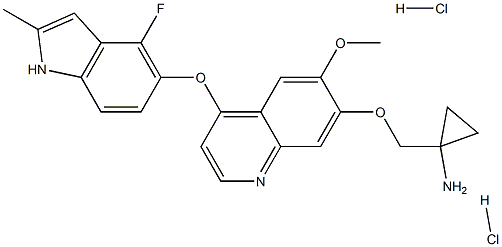Anlotinib can occupy the ATP-binding domain of VEGFR tyrosine kinase, and has high selectivity and inhibitory activity for VEGFR2 compared to other tyrosine kinases (IC50<1 nM). Anlotinib inhibits VEGFR2 and VEGFR3 with IC50 of 0.2 nM and 0.7 nM, respectively. Anlotinib has low inhibitory activity against VEGFR1 with IC50 of 26.9 nM. Anlotinib inhibits PDGFR-related kinases c-Kit and PDGFRβ with IC50s of 14.8 and 115 nM, respectively. It has less activity against other kinases such as c-Met, c-Src, EGFR and HER2. Anlotinib inhibits VEGF-induced signaling and cell proliferation in HUVEC cells at picomolar concentrations. However, in vitro tumor cells require micromolar concentrations of anlotinib to directly inhibit their proliferation. Anlotinib significantly inhibited HUVEC migration and tubulogenesis, and also inhibited vascular growth in rat aortic grafts in vitro.
